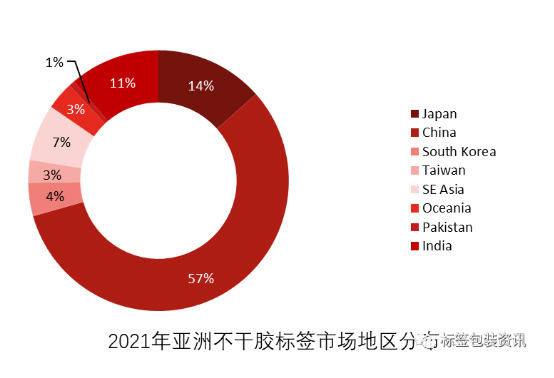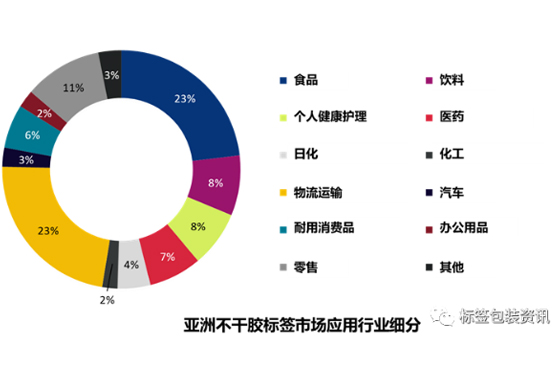【Trend】Where is the growth point of China's label market ?What are the main driving forces?
Looking back to 2021, the trend of consumption in the end market has changed significantly.
From the original supply side reform to the current demand side reform to expand the domestic demand market.
With the emergence of a new economic pattern dominated by domestic demand circulation,
consumption has become the focus of demand reform,it has also become the main driving force of
economic services, such as the formation of many new business forms such as live broadcast with goods, anime economy, etc.
As the country with the earliest outbreak of COVID-19,
China has epidemic prevention experience and strict control system,
and has dredged the upstream and downstream industrial chains and
global supply chains with high efficiency,
which is the first in the world to realize the resumption of the whole industrial chain In year 2021,
due to significantly better domestic epidemic control than abroad, and complete industrial supply chains,
some production orders in India and even Southeast Asia have gradually shifted to domestic production.

According to the latest report from the AWA Alexander Watson Association,
the global self-adhesive label will account for approximately 41% of the overall label market in 2021.
Asia remains the world's largest adhesive label market, with a 45% share in 2021.
The Chinese market further grew, accounting for 57% of the entire Asian market,
with a growth rate of 5.9%, second only to the 6.9% growth rate in Southeast Asia.
Compared with the previous double-digit rapid growth model,
the growth rate of China's label printing industry has slowed down.
On the one hand, this is the stage of normalized growth of China's overall economy.
On the other hand, under the influence of complex and severe international situation,
domestic COVID-19 epidemic, uncertainty and other factors, such growth has not been easy.
Key growth drivers
If the impact of the COVID-19 on the industry in 2020 is a beginning,
the normalization of the epidemic in 2021 has profoundly affected the development of the
overall economy and consumption patterns,
such as global restrictions, untouched consumption demand and so on.
★Logistics label
The COVID-19 has further strengthened people's online consumption habits.
After more than 20 years of rapid development in China,
the traditional e-commerce market has become a red sea.
Short video outlets have driven the trend of live streaming goods.
After more than two years of development, live streaming goods have rapidly risen and emerged,
injecting new vitality into traditional e-commerce.
According to the National Bureau of Statistics, in 2021,
the national online retail sales increased by 14.1% over the previous year.
Among them, online retail sales of physical goods increased by 12%,
with an average growth of 13.4% over the past two years,
which is significantly higher than offline consumption.
The forms of e-commerce and online shopping not only
meet people's contactless consumption needs,
but also drive the steady growth of the express logistics industry.
According to the statistics of the National Postal Administration, in 2021,
the national express delivery business volume completed 108.3 billion pieces,
breaking through 100 billion pieces for the first time, with a year-on-year growth of 29.9%.

Expressing labels has always been a significant part of the application field of self-adhesive labels.
According to the latest report released by AWA, in the field of application of self-adhesive labels,
the share of logistics labels in the Asian market was equal to that of food labels in 2021,
accounting for 23% of the market share, which is inseparable from the rapid development of e-commerce.
★Medicine, personal health care
Another noteworthy growth point comes from the fields of medicine and personal health care.
As the first country to resume work and production,
China basically achieved a comprehensive resumption of work and production in 2021.
The frequent circulation of materials and personnel under the dynamic situation of the epidemic has led to
an increase in the demand for relevant epidemic prevention and disinfection drugs, toiletries,
and other products, and the amount of labels used has also increased accordingly.
★Digital label
In 2021, China achieved a new breakthrough in the development of the digital economy,
with the scale of the digital economy reaching 45.5 trillion yuan, a nominal increase of 16.2% year-on-year.
According to the people's comment on the CCTV, online shopping, online services and other new forms of
business have played an important role in the fight against the epidemic.
The state has successively issued support policies to comprehensively promote "Internet plus" and create new advantages in the digital economy.
Internet plus has driven the innovation and diversification of label forms. Digital labels are just such products, such as QR code, VR, NFC, RFID, etc.
At the beginning of the COVID-19 epidemic, it did have some negative impacts on the application of RFID digital labels..
According to IDTechEx data, the global RFID market declined by 5% from 2019 to 2020.However,
it has also driven some growth. According to the company's analysis,
the market size of the RFID industry reached 11.6 billion US dollars in 2021,
showing an upward trend.This is because digital labels not only meet the habits and needs of non-contact
procurement developed by people under the epidemic, but also meet people's requirements for
data transparency such as anti-counterfeiting traceability
In particular, UHF RFID tags have the characteristics of high transmission rate, group reading,
and can quickly read a large number of electronic tags in a short time, which can greatly improve the
management efficiency of the supply chain.In addition, with the continuous development and maturity of its technology,
the price of UHF RFID tags has also significantly decreased, and now they are not only widely used,
but also growing very fast.In 2021, the global shipment of UHF tags reached 23 billion pieces.
China is the largest manufacturer of digital labels in the world currently.
According to a report from the AIoT Star Map Research Institute,
the production of UHF RFID tags in China accounts for around 70-80% of the global market.In 2021,
the production of UHF tags in China reached 16.8 billion pieces.
Major smart label manufacturers such as Eli Denison, Yongdao, Cinda, Shangyang Wireless,
Baodian, etc., have their factories mainly located in China


